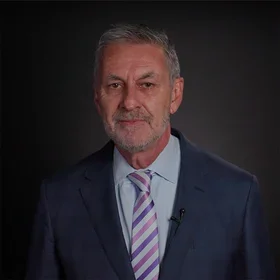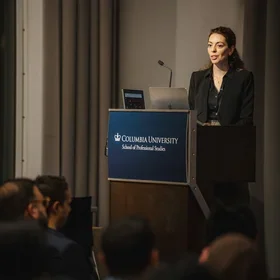By Peter Dixon, associate professor in the M.S. Negotiation and Conflict Resolution program; and Teya Gulie, M.S. candidate in the Negotiation and Conflict Resolution program
In the United States, traditional criminal justice follows a fairly narrow, punitive path: Break the law, go to jail. While this model has significant shortcomings—and produces negative outcomes at personal, community, and social levels—few alternatives exist. The Red Hook Community Justice Center in Red Hook, Brooklyn (Justice Center), is an important exception. Part of a citywide network of community courts under the New York State Unified Court System, and also supported by the national group, Center for Justice Innovation, the Justice Center has served as a model of community-oriented justice since 2000. Those accused of lower-level crimes like theft are given a chance to avoid incarceration by addressing the root causes of their crimes through treatments and services. The center also supports the broader Red Hook neighborhood with youth programming, referrals, defense against eviction, and many other services.
The impact of this “community justice” model can be tricky to measure. The traditional metric of criminal justice success is whether someone commits a crime again: what’s known as recidivism. While an important indicator, recidivism doesn’t capture the breadth and depth of what the Justice Center does for defendants and the broader community. Should someone who makes a real effort toward rehabilitation be deemed a failure if they end up back in the criminal justice system? What does it mean for the Justice Center when some residents see it more as a community-based organization than as a court?
Since 2022, I have been working with Dr. Hadar Dancig-Rosenberg, professor of law at the Bar-Ilan University Faculty of Law, to help the Justice Center define the many ways in which it changes people’s lives. Through nine focus groups with defendants, lawyers, judges, staff, and Red Hook residents, Dancig-Rosenberg and I came up with a list of 71 “everyday indicators” of justice. These range from judges talking to defendants about the broader struggles they face to Justice Center staff empowering residents to fight back against absentee landlords. In October, one of my graduate students, Teya Gulie, and I brought this list to a bigger community event in Coffey Park in Red Hook. It was a warm October day just before Halloween, where residents in costume joined community groups to celebrate their neighborhood—and get some candy in the process.
Below, Gulie reflects on her NECR capstone project and her experience helping Red Hook residents provide their feedback on what justice means to them.
Defining the Justice Center’s Success: Reflections from the Community
The Red Hook Community Justice Center, located in Brooklyn, New York, serves as a community court and provides programs and treatments that go beyond the courtroom. I joined this research project first by transcribing focus group recordings and then participating in a community event where Red Hook residents voted on what they thought defined the Justice Center’s “success” and how it could best serve the community.
We displayed the indicators on large posters in English and Spanish behind a desk where Justice Center staff distributed information and candy. These indicators spanned various themes, such as courtroom architecture, accessibility, rehabilitation, trust, and community engagement.
The event brought out members of the diverse Red Hook community. At our table, we gave residents stickers to vote on what they considered the most important indicators to shape the future of their Justice Center. This participatory approach will help put the community’s voice at the forefront of the Center’s decision-making and planning.
This research project resonates with my academic interests and NECR capstone project, where I am exploring restorative interventions for the school-to-prison pipeline in Minneapolis. Learning about and connecting with individuals who are part of the Red Hook Community Justice Center has provided valuable insights into the practical implementation of restorative justice principles. This research project has provided me with firsthand insight into the enthusiasm and willingness of community members to actively participate, emphasizing the significance of “bottom-up” interventions that originate from the community itself.
As I progress with my capstone project, I’m excited to explore how the successful strategies and indicators identified at the Justice Center can be adapted and implemented in the context of Minneapolis. It was a privilege to learn from the Red Hook community about the essence of advocacy and the impact of community engagement. I walk away with a newfound confidence in the power of community participation to shape a more just and inclusive justice system. This experience has inspired me to become more involved in my own community and contribute to the ongoing efforts to educate, advocate, and create positive change.
About the Program
Columbia University’s Master of Science in Negotiation and Conflict Resolution prepares students to analyze the root causes and dynamics of conflict and to transform disputes through reasoned and resourceful interventions. The program focuses on developing self-awareness, tenacity, and interpersonal competency; building common ground; opening lines of communication; ensuring representation and recognition, and building sustainable possibilities for resolution.
About the Capstone Course: Resolution Strategies
Peter Dixon’s class, Resolution Strategies, is the second in a three-course capstone sequence in the Negotiation and Conflict Resolution program. Students are equipped with process considerations and mechanisms to plan and prepare for interventions aimed at resolving grievances or underlying needs. Students become proficient at thinking contextually while being grounded in their cases and intervention strategies. Learn more about the Negotiation and Conflict Resolution program curriculum.


